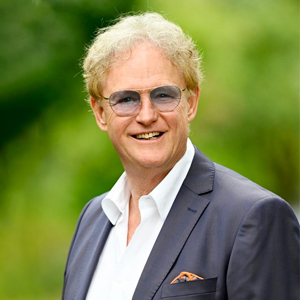A non-surgical facelift is any procedure aimed to plump up, refresh, and reduce aging effects on the facial skin, typically without incisions. It is either a minimally invasive or non-invasive procedure that usually works to stimulate collagen and elastin production and make skin cells more retentive of moisture. As a result, the facial skin becomes less wrinkled and more radiant, and its laxity decreases to a certain degree.
Table of Contents
- 1 Difference between Surgical and Non-Surgical Facelifts
- 2 Ideal Candidate For A Non-Surgical Facelift
- 3 Types of Non-Surgical Facelift
- 4 Dermal Fillers
- 5 Benefits
- 6 Risk and Complications
- 7 How can I maintain the results of a non-surgical facelift?
- 8 When should I see my healthcare provider?
- 9 How Long Does A Non-Surgical Facelift Last?
- 10 Non-surgical Facelift FAQs
- 11 Our Surgeons
- 12 Consult an Expert
Difference between Surgical and Non-Surgical Facelifts
The signature difference between both these types is that a surgical facelift involves incisions while a non-surgical doesn’t. The incisions made during a surgical facelift allow your surgeon to trim away excess skin and fat, reposition the underlying tissues and muscles, and tighten the skin.
On the other hand, non-surgical facelifts use injectables, lasers, threads, and other techniques that promote skin revitalization naturally. This adds glow to the skin, improves the appearance of fine lines and wrinkles, and reduces skin sagginess.
A surgical facelift leads to a relatively extensive recovery, during which you will experience swelling, bruising, and discomfort in the treated region. In contrast, non-surgical facelifts lead to fewer and milder complications and a shorter recovery duration.
That said, the rejuvenation achieved with a surgical facelift is more dramatic and longer-lasting than a non-surgical procedure.
Ideal Candidate For A Non-Surgical Facelift
A suitable candidate for a non-surgical facelift typically has:
- Some laxity in the facial skin
- Double chin
- Lost facial volume
- Diminishing facial contour
- Fine lines and wrinkles
- A positive outlook and realistic expectations of the treatment
Types of Non-Surgical Facelift
Dubai Cosmetic Surgery Clinic offers a variety of non-surgical facelift treatments suitable for individuals experiencing mild to moderate signs of aging.
The most common types of non-surgical facelifts are as follows.
Ultherapy
Ultherapy is an FDA-approved non-surgical anti-aging treatment that delivers ultrasound energy to the deeper skin layers. When this energy reaches the targeted depth, it transforms into heat, accelerating collagen production. This treatment aims to tighten and lift the facial and neck skin and may improve the appearance of fine lines and wrinkles on the face, neck, and décolletage.
Dermal Fillers
Dermal fillers are hyaluronic acid injections that, when administered into the strategic areas of the face, help restore volume and reduce aging signs. These injections aim to rejuvenate the skin on a cellular level by potentially improving its ability to retain moisture. This helps reduce skin sagginess and smooth fine lines and wrinkles. What you get as a result is a lifted-up, radiant facial appearance.
HIFU
HIFU, or High-Intensity Focused Ultrasound, is a non-surgical treatment to tighten the skin and reduce the appearance of fine lines and wrinkles. This treatment uses focused ultrasound energy that produces heat in the skin, aiming to stimulate collagen production without significant injury to the tissues. This injury activates skin recovery that stimulates collagen and elastin production, helping you achieve a more lifted-up and firmer facial appearance.
Thread Lift
A thread lift is a minimally invasive procedure during which a surgeon uses medical-grade threads (inserted under the skin and latched onto its inner side) to lift the facial and neck skin manually. This treatment aims to effectively and immediately reduce the skin’s saggy appearance. These threads also stimulate collagen production, further increasing the anti-aging effect.
Botox
Botox is an injection-based treatment that uses a neurotoxin called Botolinumtoxin to reduce the aging effects on the face. This neurotoxin works by relaxing muscles responsible for fine lines and wrinkles. It is commonly used to treat prominent frown lines, forehead creases, and crow’s feet, with varying effectiveness.
Chemical Peels
Chemical peels can improve the aged appearance by removing the old superficial skin layer. It is a clinical treatment involving the topical application of a chemical peeling solution of particular strength to the facial and neck skin. This solution dissolves the top skin layer and causes controlled inflammation in dermal tissues, stimulating collagen production. This treatment aims to smooth the skin texture and may produce a more tightened, lifted-up facial appearance.
Laser Skin Resurfacing
Laser skin resurfacing, or laser peel, is one of the advanced treatments that help reverse aging signs on the face and neck. It uses a laser beam that targets and removes the outer skin layer and heats the underlying layer called the dermis. This multi-faceted action reveals a fresh skin layer, induces tissue recovery, and stimulates collagen production. The tissue regeneration effect aims to make the skin smoother, firmer, and less saggy than before.
Microdermabrasion
Microdermabrasion is a non-surgical procedure that rejuvenates the skin. This treatment typically involves using a handheld device that sprays fine particles onto the skin to gently remove the topmost layer, promoting skin rejuvenation. These crystals also cause mild inflammation in the skin that accelerates collagen production, improving the skin texture and reducing laxity.
Microneedling
Microneedling is a minimally invasive procedure that smoothens and tightens the skin by stimulating collagen production. It involves using tiny, sterilized needles that painlessly pierce the skin, creating micro-punctures. This needle-piercing causes controlled inflammation only to activate a healing response that accelerates collagen and elastin production. This treatment aims to help clear fine lines and wrinkles and give facial skin a firmer, tightened appearance.
Benefits
Non-surgical facelifts offer numerous benefits. Some of them are as follows:
- These treatments can effectively reduce aging signs, such as fine lines, creases, acne scarring, lack of facial volume, and skin laxity.
- Most of them cause little to no pain and often lead to minimal downtime.
- They do not require general anesthesia. Topical anesthesia or numbing may be needed in some cases, however.
- These treatments are less expensive than other invasive options.
Risk and Complications
Non-surgical facelifts are generally considered safe but can cause complications, which are usually minimal. A few of the risks are:
- Bleeding
- Bruising
- Swelling
- Dry skin
- Itchiness
- Redness
It is important to note that these side effects are often mild in nature and subside in a few days. But if you are still wary, you can communicate your concerns to your dermatologist.
How can I maintain the results of a non-surgical facelift?
While the results of non-surgical facelifts are typically shorter in duration compared to surgical alternatives, maintaining a healthy lifestyle, protecting skin from sun damage, and following post-treatment care can prolong the effects. Here is what you can do:
- Avoid smoking, as it can compromise healing and accelerate collagen degeneration.
- Use sunscreen with a high SPF rating.
- Maintain a healthy body weight.
When should I see my healthcare provider?
Consulting with a healthcare provider before undergoing a non-surgical facelift is crucial to assess your suitability for the treatment and discuss any potential risks or concerns. They may recommend you not to get a non-surgical facelift or ask you to wait if you have one or more of the following pre-existing skin conditions:
- Cold sores
- Active acne
- Psoriasis
- Eczema
- Skin rashes
- Burns
Furthermore, a non-surgical facelift may be ineffective in specific scenarios. During the initial consultation, your doctor will examine your skin to rule out issues that make this treatment futile. Those issues include the following:
- Severe skin laxity
- Severe scars
- Deep wrinkles
How Long Does A Non-Surgical Facelift Last?
Non-surgical facelifts do not drastically modify the skin tissue structure. Therefore, their results tend to last only a few months. The duration of results from non-surgical facelifts can vary, generally lasting from six months to a year, depending on the specific treatment and individual factors.
Non-surgical Facelift FAQs
Is the procedure safe?
While the procedure is FDA-approved, as with any medical treatment, there are inherent risks, though they are generally minimal with non-surgical facelifts.
How long does the procedure last?
The duration of the procedure varies depending on the technique used and individual factors such as the severity of aging signs and adherence to pre-treatment instructions.
Does skin color and type matter?
While non-surgical facelift treatments are designed to be effective across various skin types and colors, individual results may vary, and certain treatments may be more suitable for specific skin types.
How long the results may last?
The results may last for several months to years. The longevity of results from non-surgical facelifts varies widely among individuals and depends on the specific treatment, lifestyle factors, and how the body responds to the procedure.
Our Surgeons
Consult an Expert
Regain the looks of your younger self with non-surgical facelift treatments at Dubai Cosmetic Surgery Clinic, where we have highly skilled board-certified dermatologists and top-of-the-line medical equipment to assist you in your journey towards rejuvenation. For details or to book a consultation, please call +971 4 348 5575. If you want to schedule an appointment online, please fill in the form below.
Fill in the form to get a consultation
100% Financing with 0% Interest




